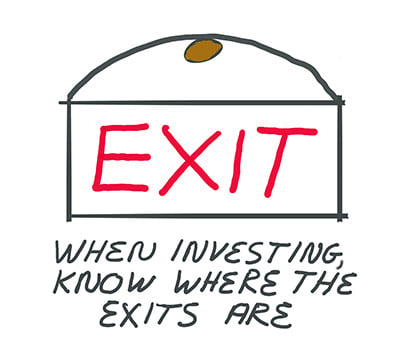The latest from the AAII: How To Sell Stocks. Including knowing where the exits are. Hope everyone had a great weekend.
AAII: Guidelines for Selling Stocks |
9-7-23 The idea of writing about sell rules comes from an ongoing discussion that I'm involved in. My investment club has owned shares of Nvidia Corp. (NVDA) for several years. Given its significant increase in price, some of us—including me—are in the “let's lock in some of our profits” camp. Others are focused on the strong ongoing growth prospects for the company given the rise of artificial intelligence (AI) and want to hold on to the stock. The semiconductor company's numbers speak for themselves. For the second quarter ending in July, revenue doubled year over year to $13.5 billion and adjusted earnings surged 429% from one year ago to $2.70 per share. Cash from operating activities jumped to $9.3 billion for the first half of 2023 from $3.0 billion in the first half of 2022. Enthusiasm about the company's numbers and prospects have led to a lofty price-earnings (P/E) ratio of 113.7 and a very high price-to-sales (P/S) ratio of 35.61. |
 |
How you view a high-growth stock—be it Nvidia or another stock—depends on your style of investing. Those in the value camp, like me, are willing to sell when valuations get pricey. Those in the growth camp focus not only on past growth but also on the prospects for continued strong growth. In the middle are those who seek growth but set an upper limit on how much they are willing to pay in terms of valuations. This is known as growth at a reasonable price, or GARP. Regardless of the type of investor you consider yourself to be, it is important to know what will cause you to sell before buying an investment. I call this knowing where the exit doors are. Clear, established sell rules provide the needed guidance to determine whether you should hold or sell. Without such rules in place, you (and me) will be left to our emotions and our cognitive biases. This is never a good thing. The best time to determine when to sell is before the decision needs to be made. Ideally, you should set the sell parameters before you submit an order to buy a stock or any other type of investment. |
No comments:
Post a Comment